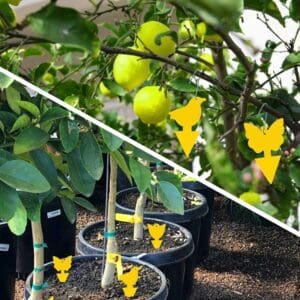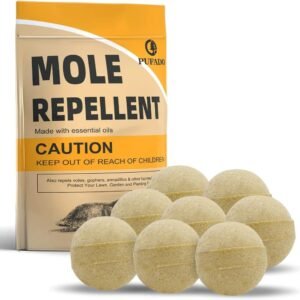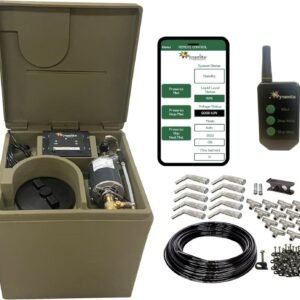Why Are Carpenter Ants In My House?
Imagine this scenario: You wake up one morning, make your way downstairs to grab a cup of coffee, and as you enter the kitchen, you are greeted by an unexpected sight – carpenter ants scurrying across your countertops. Panic sets in as you wonder why these unwanted guests have invaded your home. In this article, we will explore the reasons behind the presence of carpenter ants in your house and provide you with valuable insights to help you tackle this pesky problem. So, let’s get to the bottom of why these ants have chosen your house as their new hangout spot.
Introduction
Why Are Carpenter Ants In My House?
Carpenter ants can be a nuisance when they invade your home, causing damage to the structure and posing a threat to your peace of mind. Understanding the problem of carpenter ants is vital in order to effectively address the issue. In this article, we will explore the importance of taking action against carpenter ants, debunk common misconceptions about these pests, and provide helpful information on identifying, preventing, and controlling their presence in your home.
Understanding the problem
Carpenter ants are not mere pests; they are destructive insects that can compromise the structural integrity of your home. Unlike termites that consume wood, carpenter ants tunnel through it to create nests and galleries, leading to weakened and damaged structures. It is crucial to address the issue promptly to prevent further damage and potential safety hazards.
Importance of addressing the issue
Allowing carpenter ants to establish colonies within your home can have severe consequences. The structural damage they cause can be extensive and costly to repair. Moreover, their presence can attract other pests, such as termites and wood-destroying beetles, further exacerbating the problem. Eliminating carpenter ants promptly can help preserve the value and safety of your home.
Common misconceptions about carpenter ants
There are several misconceptions surrounding carpenter ants that can hinder effective treatment and prevention efforts. One of the most notable misconceptions is that carpenter ants consume wood like termites. In reality, they excavate tunnels within wood for nesting purposes, while termites feed on wood as their main food source. Understanding these distinctions is crucial in implementing appropriate control measures.
Identifying Carpenter Ants
In order to effectively deal with carpenter ants, it is essential to be able to identify them accurately. Carpenter ants have distinct physical characteristics that set them apart from other ant species. They are typically larger than other ants, with workers measuring between 6 and 12 millimeters in length. They have a sleek black or dark brown exoskeleton and are often accompanied by smaller winged ants during their mating season.
Physical characteristics
Carpenter ants possess a unique physique that differentiates them from their fellow ant species. They have a well-defined waist, or “pedicel,” which gives their segmented body a narrow and distinct appearance. Another distinguishing feature is their large mandibles or jaws, which are used for excavating wood and defending their colonies.
Behavioral traits
Unlike other ants that prefer to establish their nests outdoors, carpenter ants tend to make their homes inside wood structures. They are most active during the night, foraging for food and expanding their colonies. Carpenter ants exhibit a high level of organization within their colonies and have a clear hierarchy consisting of workers, soldiers, and the queen.
Signs of infestation
Identifying signs of a carpenter ant infestation is crucial to prevent further damage. One telltale sign is the presence of large winged ants, known as “swarmers,” inside your home. These winged individuals are reproductive ants that are looking to establish new colonies. Other signs include the presence of wood shavings or “frass” near wooden structures, hollow or rustling sounds coming from within walls, and the sighting of worker ants in or around your home.
Attractants and Conditions
Carpenter ants are attracted to certain conditions and materials that provide them with suitable nesting sites and sources of food. Understanding these attractants can help you modify your environment to discourage infestations.
Presence of moisture
One of the primary attractants for carpenter ants is moisture. They require a damp environment to establish their nests, making areas with water leaks or high humidity levels particularly vulnerable. Identifying and fixing sources of excess moisture, such as leaking pipes, faulty gutters, or inadequate ventilation, can play a crucial role in preventing carpenter ant infestations.
Decaying wood and wooden structures
Carpenter ants are attracted to decaying wood, making untreated lumber, rotted fences, or old tree stumps potential nesting sites. Wooden structures that have decayed or been damaged by water are particularly appealing to these pests. Regularly inspecting and maintaining wooden areas in and around your home can significantly reduce the likelihood of carpenter ant infestations.
Food sources for carpenter ants
While carpenter ants do not feed on wood, they require sources of food to sustain themselves and their colonies. They are opportunistic omnivores, feeding on a variety of food items, including sugars, proteins, and other insects. Properly storing food and eliminating food debris can help minimize their attraction to your home.
Environmental Factors
Several environmental factors can contribute to the presence of carpenter ants in and around your house. Understanding these factors can help you identify potential vulnerabilities and take appropriate preventive measures.
Outdoor elements
Carpenter ants are commonly found in wooded surroundings, as trees provide an ideal habitat for nesting. If your property is located near forests, parks, or other natural habitats, there is a higher likelihood of carpenter ants finding their way into your home. Regularly monitoring and treating the perimeter of your property can help reduce the risk of infestation.
Landscaping and vegetation
Well-maintained gardens and dense vegetation can provide hiding places and nesting sites for carpenter ants. Overgrown bushes, tree branches touching your house, or woodpiles in close proximity to the building can all serve as entry points for ants. Regularly trimming vegetation and removing potential nesting sites can make your property less appealing to these pests.
Proximity to natural habitats
Homes located in close proximity to bodies of water, such as lakes, rivers, or ponds, are more prone to carpenter ant infestations. Carpenter ants are attracted to moist environments and tend to establish nests in areas with abundant water sources nearby. Taking preventive measures and regularly inspecting vulnerable areas can help minimize the risk of infestation.
Structural Vulnerabilities
Carpenter ants exploit various structural vulnerabilities when establishing nests within your home. Identifying and addressing these vulnerabilities can significantly reduce the risk of infestations and subsequent damage.
Damaged or decaying wood
Carpenter ants are adept at detecting weakened or decaying wood, which they use as primary nesting sites. Wood that has been damaged by water, such as window frames, door frames, or siding, is particularly susceptible. Regularly inspecting and promptly repairing or replacing damaged wood can help prevent carpenter ant infestations.
Gaps, cracks, and openings
Carpenter ants can enter your home through small openings, including gaps around windows and doors, cracks in the foundation, or even tiny holes in the walls. Seal any potential entry points with caulk or weatherstripping to prevent ants from gaining access to your home.
Insufficient insulation
Inadequate insulation can create favorable conditions for carpenter ants, providing them with warmth and moisture. Ensure that your home is properly insulated, paying particular attention to spaces such as attics, crawlspaces, and basements. This helps create an unfavorable environment for carpenter ants and deters them from establishing nests.
Nesting Locations
Understanding the preferred nesting locations of carpenter ants is essential to effectively eliminate infestations and prevent future occurrences. By identifying these nesting sites, you can take targeted measures to eradicate the problem.
Preference for damp environments
Carpenter ants are drawn to damp environments due to their need for moisture. Basements, crawlspaces, and areas near leaking pipes or faulty drainage systems are particularly attractive to them. Addressing any moisture issues and ensuring proper ventilation can discourage carpenter ants from nesting in these areas.
Common nesting sites inside houses
Carpenter ants often establish nests inside wooden structures in and around your home. Common indoor nesting sites include wall voids, hollow doors, attics, and even inside insulation. Conducting thorough inspections and treating potential nesting sites can help prevent carpenter ants from using your home as their breeding ground.
Related risks and damages
Allowing carpenter ants to establish nests inside your home can lead to significant damages. These ants not only weaken wooden structures but can also cause electrical hazards by tunneling through wires. Additionally, their presence poses health risks, as they can contaminate food and surfaces with bacteria or pathogens. Taking immediate action is crucial to minimizing the potential risks and damages associated with carpenter ant infestations.
Seasonal Patterns
Carpenter ant activity and behavior can vary throughout different seasons, and understanding these patterns can help you implement effective control measures.
Ant activity during different seasons
Carpenter ants are more active during the warmer months, typically between late spring and early fall. This is when they forage for food and establish new colonies. During the winter months, their activity subsides as they enter a state of dormancy. Understanding their seasonal patterns can help you anticipate and address infestations effectively.
Understanding reproductive cycles
Carpenter ants have distinct reproductive cycles, consisting of a mating flight during which new colonies are established. Male and female winged ants emerge from existing colonies, mate in flight, and then the females search for new nesting sites. Recognizing the signs of a mating flight and promptly addressing it can prevent the establishment of new colonies inside your home.
Main points of concern
It is important to be vigilant during the warmer months to detect any signs of carpenter ant activity. Conduct regular inspections to identify winged ants, frass, or any other indications of infestation. Taking action as early as possible can help prevent significant damage and potential colony expansion.
Prevention and Control
Preventing carpenter ant infestations is key to avoiding the costly repairs associated with their presence. Implementing preventive measures and taking proactive steps can significantly reduce the risk of infestation.
Eliminating attractants
Removing attractants from your home is a critical step in preventing carpenter ants from establishing colonies. This includes proper food storage, eliminating sources of excess moisture, and maintaining a clutter-free environment. Regularly cleaning and sanitizing your home can also help reduce the presence of food debris and discourage ant activity.
Sealing entry points
Sealing potential entry points is essential in keeping carpenter ants out of your home. Use caulk and weatherstripping to seal gaps around windows and doors, repair cracks in the foundation, and ensure that door sweeps are installed. Regularly inspecting your home for any openings and promptly addressing them can make it more difficult for ants to infiltrate your living spaces.
Treatment options and professional help
If preventive measures are insufficient or an infestation is already present, it may be necessary to implement treatment options to eliminate the carpenter ant colony. There are various strategies available, including baiting, dusting, and using insecticides. If you are unsure or dealing with a severe infestation, it is advisable to seek professional help from a pest control company. They have the expertise and tools to effectively eradicate the infestation and provide long-term prevention solutions.
Natural Remedies
For those who prefer non-toxic methods or want to complement traditional treatments, there are natural remedies that can help deter carpenter ants.
Herbal and essential oils
Certain herbal and essential oils, such as peppermint oil, clove oil, or lemon oil, are known to repel ants. You can mix a few drops with water and spray it in areas prone to infestation. However, it is important to note that these remedies may only act as deterrents and may not eliminate an existing infestation.
Beneficial nematodes and predators
Introducing beneficial nematodes or predators, such as specific species of mites or ants, can help control carpenter ant populations naturally. These organisms prey on carpenter ants and disrupt their colonies. However, it is essential to consult with an expert to ensure that the introduction of these organisms will not cause any unintended ecological consequences.
Non-toxic methods to deter carpenter ants
There are several non-toxic methods you can employ to deter carpenter ants from entering your home. These include sprinkling diatomaceous earth near entry points, using vinegar or lemon juice as a repellent, or setting up ant bait stations with a non-toxic solution. While these methods may not provide complete elimination, they can be effective in deterring carpenter ant activity.
Professional Extermination
In cases where infestations are severe or persist despite other control efforts, hiring a pest control company may be the most effective course of action.
Hiring a pest control company
Professional pest control companies have the expertise, experience, and tools necessary to tackle carpenter ant infestations. They can conduct a thorough inspection of your home, identify nesting locations, and tailor an extermination plan specific to your situation. By enlisting the help of professionals, you can ensure a safe and effective approach to resolving the problem.
Assessing the infestation
Pest control professionals will assess the severity and extent of the infestation to determine the most appropriate treatment method. This may involve baiting, dusting, or applying targeted insecticides. The assessment may also include identifying and addressing any structural vulnerabilities that contribute to the infestation.
Safety considerations and precautions
When hiring a pest control company, they will take necessary safety precautions to protect you, your family, and the environment. They will follow established guidelines and use chemical treatments responsibly. It is important to follow their recommendations regarding vacating the premises during treatment and taking precautions to prevent re-infestations.
In conclusion, addressing carpenter ant infestations requires a comprehensive understanding of the problem and effective preventive measures. By identifying carpenter ants, eliminating attractants, sealing entry points, and taking prompt action against infestations, you can protect your home from structural damage and ensure the safety and comfort of your living environment.









